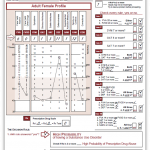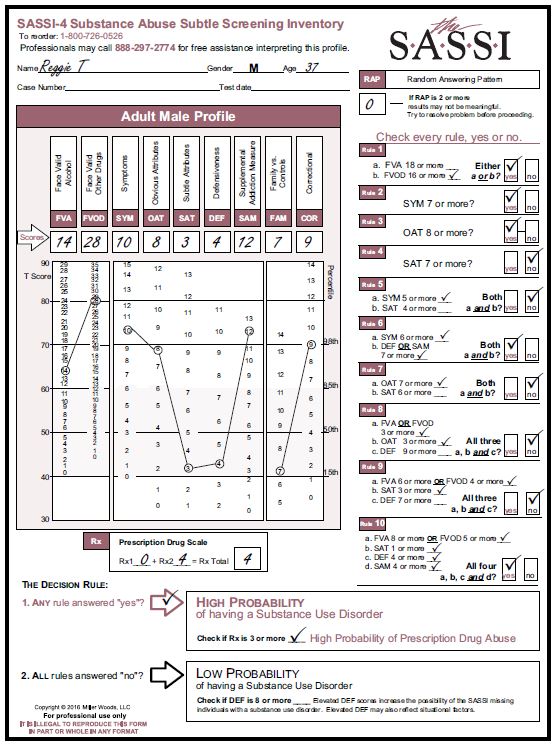
To understand the SASSI, you need to understand how the subtle items were selected. Dr. Glenn A. Miller considered several thousand potential items. First, he excluded items that reflected either general maladjustment or, conversely, obvious social desirability. He gave questionnaires containing potential items to both individuals in treatment for substance use and to control subjects. Then he looked for items that the members of one group usually answered differently from the members of the other. Although no single question could identify every person who had a substance use disorder, statistical analyses detected a set of questions that people with substance use disorders consistently answer differently than other people.
The only reason any question was included was that it worked to identify substance use disorders, not that it seemed to be related to substance misuse.
Dr. Miller did not base the SASSI upon a theory of substance use disorders, but rather used statistical analyses to empirically select those items that distinguished between known criterion groups of individuals with and without the disorder. For the purposes of screening, we do not need to understand why people with substance use disorders are more likely than other people to answer True to “I have been tempted to leave home.” What matters is that responses to this question can help us identify people who are likely to need further evaluation for a substance use problem. Research has shown that people who answer the questions similarly to people with substance use disorders have a relatively high probability of having a substance use disorder.
To further deal with the resistance that so often characterizes substance use disorders, individuals with known substance use disorders were asked to answer the questionnaire as if they were applying for an important group membership and were directed to try to hide signs of their shortcomings and problems, particularly those related to the misuse of alcohol and drugs. Analyses of answers given under these “fake good” instructions identified two types of items — those items that distinguished people who had substance use disorders from people without such disorders even when people were instructed to conceal problems, as well as items that helped identify defensive responding.
Statistical analyses revealed that the SASSI could most accurately and usefully identify individuals with substance use disorders if the items were compiled into scales, and decision rules were created for analyzing the scores.
Items were tested with various groups and selected to minimize the effects of gender, age, socio-economic status, ethnicity, and drug of choice.
Extracted from:
Lazowski, L. E., Kimmell, K.S., & Baker, S.L. (2016). The Adult Substance Abuse Subtle Screening Inventory-4 (SASSI-4) User Guide & Manual. Springville, IN: The SASSI Institute.





